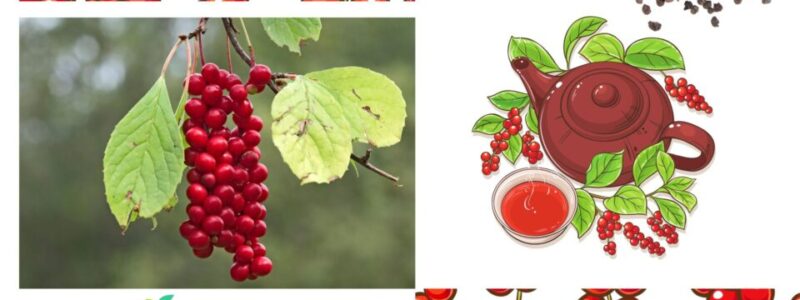
Schisandra berries, or Chinese lemongrass, are gradually gaining recognition among health food and phytopharmacology enthusiasts for their unique healing properties. The healthy lifestyle trend is promoting schisandra (Schisandra chinensis), known in Asia as Wu Wei Zi, writes EastFruit.
This ancient ingredient of traditional Chinese medicine boasts a range of health benefits that make it a contender for superfood status.
What is schizandra?
Schisandra is the fruit of the Schisandra chinensis vine, which grows naturally in northeastern China, Japan, Korea and Eastern European countries. In Asian and European countries, lemongrass is also cultivated in gardens and urban squares, where it is used for ornamental purposes and more.

The berries of this liana, resembling bunches of grapes, have a rich red color and a bright aroma. In traditional Chinese medicine, these berries are known for their adaptogenic properties, that is, their ability to help the body adapt to stress and increased stress.
Schizandra is a dicotyledonous climber that prefers warm climates and fertile soils. The plant is hardy but does not tolerate drought. It can reach 15 meters in height under favorable conditions, winding around tree trunks. The leaves of lemongrass have an elliptical or inverted ovoid shape with pronounced innervation and a sharp tip. When torn, they emit a pleasant lemon scent. The flowers of the plant hang on long pedicels and are white or whitish-pink in color. Fruits ripen in late August – early September and are juicy, red berries with lemon flavor, collected in bunches of 10-40 pieces.
Healing Schizandra in Traditional Chinese Medicine
Schizandra holds a special place in traditional Chinese medicine due to its unique properties that benefit the five organs – spleen, liver, heart, lungs and kidneys. Depending on their flavors – sour, sweet, bitter, spicy and salty – schizandra berries balance different aspects of health, helping to restore harmony between body, mind and spirit.
In China, the plant is used almost entirely, from the bark and leaves to the fruit. Lemongrass is known for its “five flavors”: sour, sweet, salty, bitter, and astringent. This makes it unique not only in cooking, but also in medicine. The fruits and seeds of the plant are used to make various medicines and tinctures.
Useful and therapeutic properties of the liana are a merit of its unique composition. Substances that are contained in the berries, act on the body as a tonic and antioxidant, which in addition helps to strengthen its defenses.

The lemongrass fruit is high in vitamins C and E. The former is an antioxidant that helps immunity and eases the course of respiratory infections. The second is also an antioxidant, cardioprotective, protects cell membranes from damage and regulates the consumption of oxygen by cells. Of the minerals in lemongrass there are calcium, potassium, zinc, iron, magnesium, iodine and others. Their content is not very high, but the main properties of the berry it does not harm.